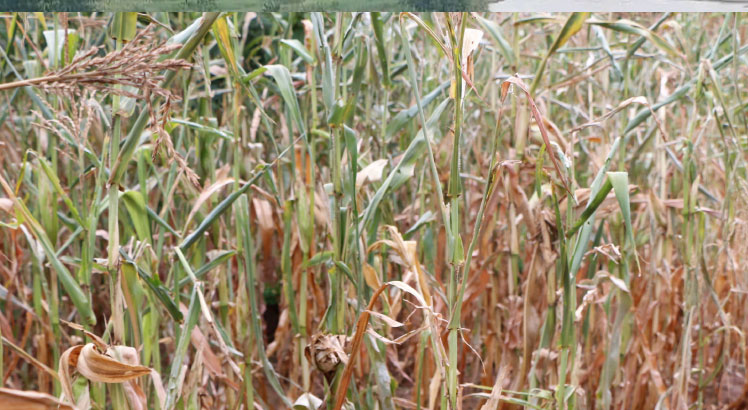Agriculture production on the decline—report
Malawi is losing a minimum of 2.3 million metric tonnes (MT) of maize production estimated at K3.2 billion due to soil degradation annually, a new policy brief has revealed.
The loss, according to the report, further reduces Malawi’s gross domestic product (GDP) by about 2.7 percent per annum.

In the brief titled ‘The economic and social cost of land and soil degradation in Malawi’, local think-tank Mwapata Institute has expressed fear that continued topsoil loss in Malawi could drive an additional 500 000 people in poverty in the next decade.
Reads the brief: “With the conservative estimation of soil loss of 22 tons/ha per year, maize productivity is projected to decline by up to 61 percent per year.
“Combining this data with the 2023/24 agricultural production estimates, it shows that Malawi is losing a minimum of 2.3 million MT in maize production due to soil degradation.
“Smallholder farmers are hit hardest as they are estimated to experience a general decrease of 0.3 percent in maize production for every 1 percent loss of topsoil, compared to 0.1 percent for large producers.”
It says the situation will inevitably lead to a further decline in agriculture productivity, threatening the already precarious livelihoods of millions of Malawians and the economy as a whole, and the attainment of Malawi’s long-term vision, Malawi 2063.
Commenting on the report in an interview yesterday, Minister of Agriculture Sam Kawale said low nutrient inputs to the soil, burning of crop residues, soil erosion, limited application of fertilisers, and poor land management practices contribute to the situation.
However, he said government is moving to address this.
Kawale admitted that implementation of one-size-fit-all fertiliser has failed to fully address the common micronutrient deficiencies faced in Malawi.
He said: “Accessing chemical fertilisers in the required amounts remains a challenge to most farmers, now made worse by increase in global fertiliser prices. Therefore, we are promoting the integration of soil fertility management and complementary interventions
“We have also put in place several policies and initiatives that include development of area and crop-specific fertiliser, but also develop and encourage use of organic and inorganic fertiliser technologies such as inoculants and Mbeya fertilisers.”
Lilongwe University of Agriculture and Natural Resources professor in crop and soil cciences James Bokosi yesterday said fertiliser dependency was a huge challenge to achieving the Malawi 2063, the country’s long-term development strategy which has a pillar on advancing agricultural productivity and commercialisation.
He said with soil being a key medium for crop production and productivity, its degradation means loss of productivity and by extension no meaningful commercialisation.
Malawi’s 2021 National Fertiliser Policy encourages soil testing and extension support to improve the use and performance of fertilisers, addresses the proliferation of poor-quality and adulterated fertilisers, as well as promote domestic manufacturing and blending of soil- and crop-appropriate fertilisers.
The policy is expected to be a key pillar for achieving the agricultural production and productivity pillar of the National Agriculture Policy and the agricultural productivity and commercialisation pillar of the MW 2063 if fully implemented.





